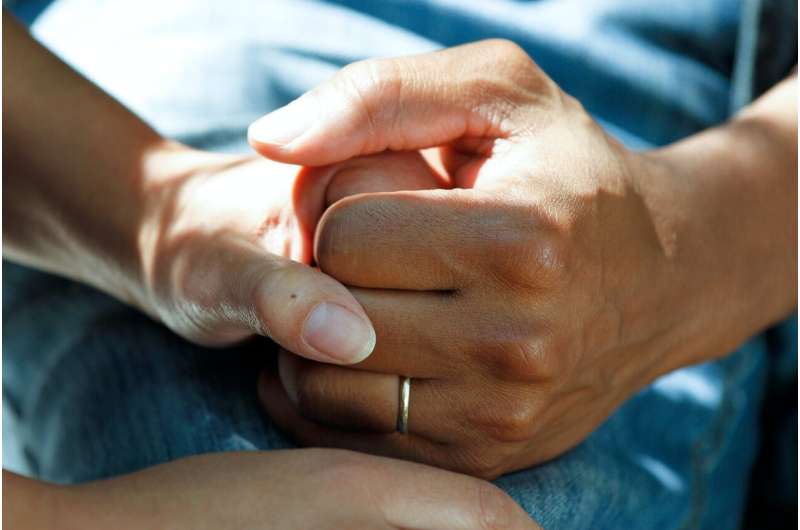

A woman in her 80s wanted to play with her great-grandchildren when they came to visit, but knee pain made it difficult for her. A man in his late 70s said he enjoyed going out to dinner, but was constrained by the meal preparation guidelines that he needed to follow because of his diabetes.
Both people have multiple chronic conditions. They also have life goals, things they want to do to live their lives fully, like playing with grandchildren and going out to eat. Understanding these goals and barriers to them, helps doctors align care with what matters most to their patients while eliminating unwanted health care, said the authors of a report that was published March 24 in JAMA Network Open.
The report, the first systematic description of older adults’ health care priorities, describes a structured process called Patient Health Priorities that health care providers can follow to identify the life goals of older adults with multiple chronic conditions as well as their health care preferences.
“There is growing awareness of the need to transition health care, particularly for people with multiple chronic conditions, from treating single diseases in isolation to health care that is aligned with patients’ priorities,” said Mary Tinetti, MD, the principal investigator of the Patient Priorities Care study, and the Gladys Phillips Crofoot Professor of Medicine (Geriatrics) at Yale School of Medicine (YSM).
During the study, health care providers asked 163 patients who were 65 and older and have multiple chronic conditions to identify what they value most in life such as connecting with family, being productive, or remaining independent. They then asked what specific and realistic activities they most wanted to be able to do that reflected their values. The participants also were asked to describe the barriers that prevented them from achieving their goals, such as unnecessary doctors’ visits, taking too many medications, or health concerns such as fatigue and shortness of breath.
“The medications, health care visits, testing, procedures, and self-management tasks entailed in treating multiple chronic conditions require investments of time and effort that may be burdensome and conflict with what patients are willing and able to do,” Tinetti said.
The study was conducted among patients of 10 primary care doctors from a multi-site practice in Connecticut who invited patients to participate during routine visits. Participants had to be 65 or older and have at least three chronic health conditions that were treated with at least 10 prescription medications. They also had to be under the care of two or more specialists, or have visited the emergency room at least two times, or had been hospitalized once, during the past year. Of the 236 patients at the practice, 163 agreed to participate. Most participants were white, female, about 78 years old, and had four chronic conditions. Nearly half had high school-level or less education.
Participants were asked to identify their values with questions such as, “What does enjoying life mean to you?” and “When you have a good day, what happens?” Their health care providers then worked with them to make sure their care was focused on achieving those goals. Participants also were asked what health issues most interfered with their goals, and what aspects of their health care they found helpful and which they felt were unhelpful to too burdensome.
The 163 participants identified 459 outcome goals, the most common of which were sharing meals with friends and family (7.8%); visiting with grandchildren (16.3%); going shopping (6.1%), and exercising (4.6%). Twenty participants (4.4%) said they wanted to be able to stay in their homes and live independently. Common barriers to their goals were pain (41%); fatigue, lack of energy or poor sleep (14.4%); unsteadiness (13.5%); and shortness of breath and dizziness (6.1%).
Thirty-two participants (19.8%) felt they were taking too many medications, while 57 (35.0%) reported having bothersome symptoms from their medications but did not mention specific drugs. Also, 43 (26%) participants said that visits to their primary care physicians and specialists were helpful, although 15 (9%) said they have too many visits or doctors. “I’m tired of going to so many doctors.”
Understanding what’s important to patients can help with patient-doctor communication and decision-making, Tinetti said. “If a patient’s outcome goals are not achievable or realistic given their health status, a conversation might include, “I worry that you might not be able to continue driving your friends to the theater. I wonder if there are other ways to fulfill your desire to see shows and connect with your friends that could be more achievable.”
Participants were drawn from a single practice with a homogeneous patient population; results may not generalize to other populations, and identifying the priorities of diverse groups is essential, the report’s authors noted. “While further research is needed, the study suggests the feasibility of asking people about their goals and preferences, and getting responses that can inform decision-making,” Tinetti said.
Self-Directed Website Launches
A newly launched website, MyHealthPriorities.org, grew out of the Patient Priorities Care initiative. People can use the website to identify their priorities so they can discuss them with their health care team.
“When there isn’t a healthcare provider available to do the health priorities identification, there is now this option of the self-directed website,” said Jessica Esterson, MPH, project director in the Section of Geriatrics at YSM. “We want to spread this capability to as many older adults as possible. By providing the website directly to individuals we greatly expand its reach and potential.”
The website walks people through the Patient Priorities Care health priorities identification process. At the end they will have a summary to bring to their doctors that outlines their health priorities—the activities they want their health care to help them achieve based on what they are willing and able to do.
Source: Read Full Article